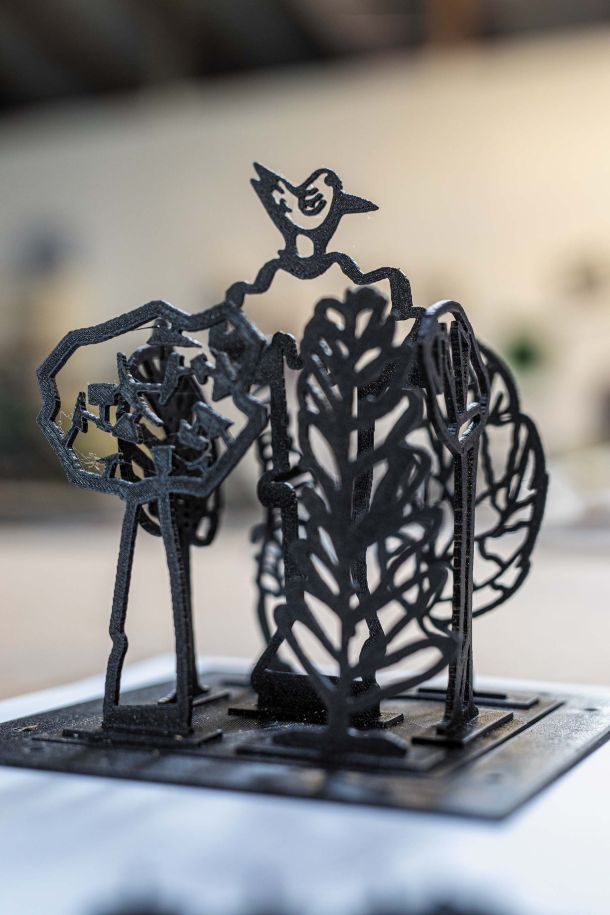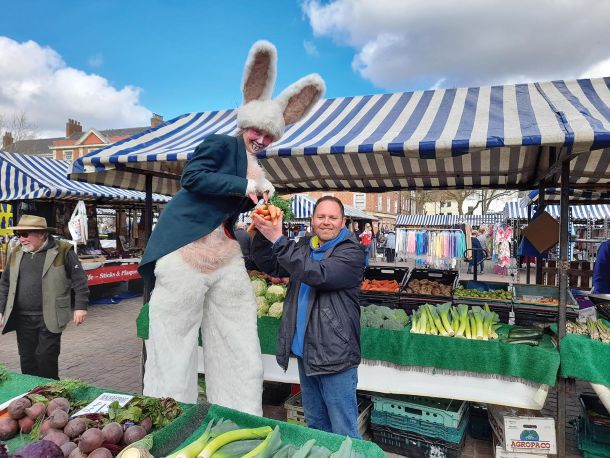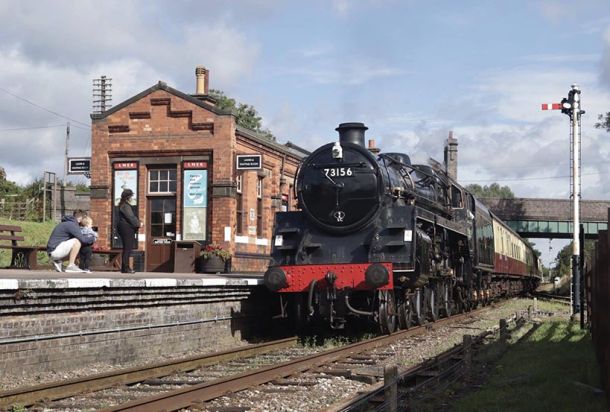Mansfield Historic Quarter
Mansfield was first granted a market charter in 1227 at a time that coincided with the beginnings of small-scale quarrying and textile manufacture. Over the following centuries the town continued to grow, its geographical importance key to its progression, with direct routes to Nottingham, Newark, Worksop, Chesterfield and Rotherham, and of course as the original roots of Sherwood Forest. By the 18th century, the town had expanded to accommodate industrial advances. Malting of hops for breweries was overtaken towards the end of the century by framework knitting with an abundance of mills powered by the River Maun. This was followed by the development of iron foundries and the first coal mines were sunk on the town’s outskirts, and in the 20th century new industries such as metal box manufacturing and shoe making. Notably though, the town has retained its bustling market centre and trading quarter, and it is embraced still today by a proud community who cherish its heritage, and continue to enjoy the plethora of buildings and shops that have shaped its character.
The historic quarter is made up of Leeming Street, West Gate, Market Place and Church Street, and visitors interested in discovering more should pay a visit to Mansfield Museum. There is also an excellent town centre heritage trail, which starts from the museum, perfect for combining the two activities in one day. The trail will take you approximately two hours on foot and there are maps and audio options available.
Leeming Street
The street offers an insight into different historical periods and the remains of medieval patterns of streets can still be seen. Late 17th century grand houses and tiny framework knitter’s cottages sit alongside the remains of the town’s industrial past, such as water-powered mills and maltings. Sadly though many of the timber framed buildings that once adorned the area were destroyed by two 16th century fires. Have a wander and keep an eye out for the Miner’s sculpture, the Bowl in Hand public house, the Old Library and the Samuel Brunts building. Mansfield Museum is also located here.
Market Place
By the turn of the 19th century, the Market Place was a maze of small streets bustling with life and filled with an assortment of shops, pubs and street traders. It was the vibrant centre of the town where you would come to trade and buy wares and socialise. Such was its popularity that it was often hard for horses and carts to pass through. Inevitably a re-development was needed and in 1823 it was demolished and replaced with a much more open market place, which we now see today. Some interesting buildings to look out for include the Town Hall, Moot Hall, Bakehouse Building, the Swan, the White Hart, the Bentinck Memorial and of course you cannot miss the railway viaduct.
Church Street
Formerly known as Kirkgate, this is known to be one of the oldest streets in Mansfield and links the church, Moot Hall and the site of the old market place. It was once the place where a number of coaching inns vied for custom, providing rooms for weary travellers and stabling their horses. A tannery behind the Ram public house in the 17th century continued to trace until the late 1800s. Interestingly, an inn and a number of cave houses were cut into the limestone cliffs which can be seen behind the modern shop fronts in the street. Keep an eye out for the Post Office, The Ram, White Lion Yard, St Peter’s House, the Maltings, The Town Mill, Rock Court and the Grammar School.
Westgate
One of the busiest streets in modern Mansfield, it was a cattle market until 1877 when this was relocated to Nottingham Road. A number of 17th century houses survive at the northern end of Westgate. The shop with the horses’ heads on the frontage was once the site of the old Nag’s Head Inn dating from the early 1700s; a popular meeting place for market traders and visitors. The Midland Hotel, the Old Meeting House, Rosemary Centre, St Philip Neri Church, Cromwell House and Parsonage can all be found here. Also, Robin Hood fans will note that a tree has now been planted on West Gate to mark the spot of the first Sherwood Forest.
The town centre heritage trail is highly recommended to give you a real sense of the diversity of the town’s heritage. It will take you on a fascinating journey through the centuries. The town’s market is still very much a hive of activity and is open five days a week from Tuesdays until Saturdays.
Did You Know?
The Bowl in Hand was finished in 1900 but the first pub on this site dated back to the 1750s and was known as the Bowling Green. The Samuel Brunts Building features a statue of Samuel Brunts who died in 1711 leaving much of his wealth for charitable use. The Tribute to the British Miner sculpture is a celebration of Mansfield’s coal mining heritage, and a nod to the 35,000 men employed across Nottinghamshire’s pits during the mining peak in the early part of the 20th century.
Did You Know
Moot Hall, built in 1752, was paid for by the Lady of the Manor of Mansfield, Henrietta Cavendish Holles, who lived at Welbeck Abbey. It was used as a trading place and social hub. Meetings often took place when there was a full moon so that people could find their way home afterwards in an age before street lighting. The Bakehouse Building is a wonderful reminder of early Mansfield and was a former backyard bakehouse. The Town Hall was built in 1835 and it attracted huge interest in 1837 when an illuminated clock was installed on the building, lit by gas. The Swan Hotel was once the foremost coaching inn in Mansfield, dating back to 1586. The railway viaduct remains one of Mansfield’s landmark buildings and was built in 1875 by the Midland Railway company. 15 brick and stone arches span the heart of the town; a testament to the Industrial Age.
Did You Know?
The Post Office is a fine display of a 1920s building and its magnificent ionic columns are topped with ornamental capitals. The White Lion Yard is named after an inn that was almost entirely carved into the rock face alongside cave houses with were occupied until 1901. The Ram is a beautiful timber framed building dating back to the 17th century, however its front timbered facade actually dates back to the 1920s after restoration. You can still find the original timbers inside. The painted sundial at Sundial House serves as a reminder of a time when it was commonplace to structure the working day by the light of the sun. The Old Grammar School was once the leading boys’ school of the town, built in 1551 after a charter granted by Queen Elizabeth I. Originally built as a corn and malt mill in the 1740s, the Town Mill was converted to cotton spinning in 1795, later serving as a warehouse and pub after a fire destroyed part of the building. The Matings served as the production base for malt, dating back to 1740, and supplied the Mansfield Brewery when it began brewing in 1855.
Did You Know?
Midland Hotel, once known as Broom House, was built in 1805 and prior to its purchase by the Midland Railway Company in 1862, it was an asylum for men. The Railway Station was opened in 1849 after a long success with the Mansfield to Pinxton Railway line, which first served to bring coal from the Pinxton Colliery into Mansfield from 1819 and then used to transport Mansfield stone for the rebuilding of sections of the Houses of Parliament in 1833. The Grade II listed building was awarded the prestigious ‘Railway Oscar’ in 2002. St John’s Church and School was built in 1855-6 and its construction costs were donated by Henry Gally Knight who stipulated that at least 500 of the 1,000 pews were to be free seats. Pew renting at the time enabled those who could afford it to have the best seats in the church. The Rosemary Centre, today’s central shopping hub for the town, now occupies the former Lawn Mills, established in 1906 to prepare cotton for weaving in the damper atmosphere of Lancashire. A plaque on the wall of Cromwell House, a 17th century school house, is reputed to mark what was once the centre of Sherwood Forest.














